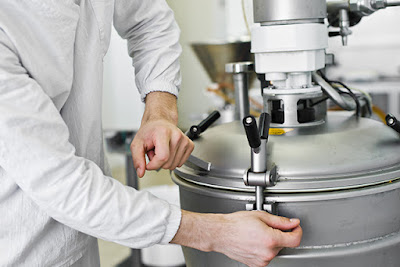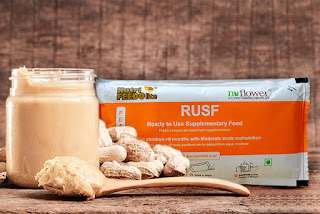Manufacturing Peanut Butter - The In & Out
Peanut butter is a popular spread that is enjoyed by many people worldwide. It is made from ground-roasted peanuts and is commonly used as an independent spread and a secret ingredient in many classic recipes. The process of making peanut butter may seem simple, but peanut butter manufacturers confirm that it is actually a complex process that involves several carefully calculated steps.
The primary ingredient in peanut butter is peanuts, which are roasted and ground to create a smooth or crunchy paste. However, some manufacturers may add other ingredients to enhance the flavor or texture of the product, such as sugar, salt, vegetable oil, and emulsifiers. Additionally, some peanut butter may contain other ingredients, such as honey, chocolate, or spices, to create different flavor variations.
The Manufacturing Process of Peanut Butter
- Procuring Raw Materials: In India, peanuts are a major agricultural crop and
are grown primarily in the states of Gujarat, Andhra Pradesh, and Tamil
Nadu. The process of sourcing peanuts for peanut butter production in
India begins with the planting of the peanuts during the monsoon season,
which typically occurs between June and September. Once the peanuts are
mature, they are harvested by hand and then dried in the sun. The dried
peanuts are then transported to processing facilities.
- Preparation And Roasting Of
Peanuts: On reaching the facility, the
raw peanuts are cleaned, sorted, and roasted to enhance their flavor and
texture. Roasting can be done using a variety of methods, including dry roasting,
oil roasting, or blanching. After roasting, the peanuts are ground into a
paste, and additional ingredients such as sugar and salt are added to
create the desired flavor and texture of the peanut butter.
- Grinding And Mixing: The roasted peanuts are then ground into a paste using
a specialized grinder, and other ingredients such as sugar, salt, and oil
are added and mixed together until the desired texture is achieved.
- Quality Control And Testing: Throughout the manufacturing process, various quality
control measures are taken to ensure the consistency, quality, and safety
of the peanut butter. This can include testing for contaminants, such as
aflatoxin, and monitoring the pH, moisture content, and texture of the
product.
- Packaging: Once the peanut butter is mixed to the desired
consistency, it is transferred to a packaging machine that fills jars or
other containers with the peanut butter. The packaging of peanut butter is
important for a number of reasons.
First and
foremost, it helps to protect the product from contamination and spoilage,
which could result in health risks for consumers. Packaging plays an important
role in marketing and branding, as it can help to differentiate one brand of
peanut butter from another. Finally, the packaging is essential for brands that
outsource their peanut butter manufacturing to external vendors and
manufacturers. The white labeling for peanut butter happens at this stage and
is crucial.
- Distribution: Once the peanut butter is packaged and tested, it is ready
for distribution. The distribution of peanut butter is typically managed
by the manufacturers or their distribution partners, who work to ensure
that the product is transported and stored properly to maintain its
quality and freshness. This may involve careful temperature control,
packaging and labeling, and adherence to food safety regulations and
standards.
The manufacturing of peanut butter
is a fascinating and complex process that involves many different steps and
technologies. From sourcing high-quality peanuts to grinding and packaging the
finished product, peanut butter manufacturers
take great care to ensure that their product meets the highest standards of
quality, safety, and freshness. Despite the challenges and complexities
involved in peanut butter production, this nutritious and delicious spread remains
a favorite of people around the world, from young children to athletes and
health enthusiasts.




Comments
Post a Comment